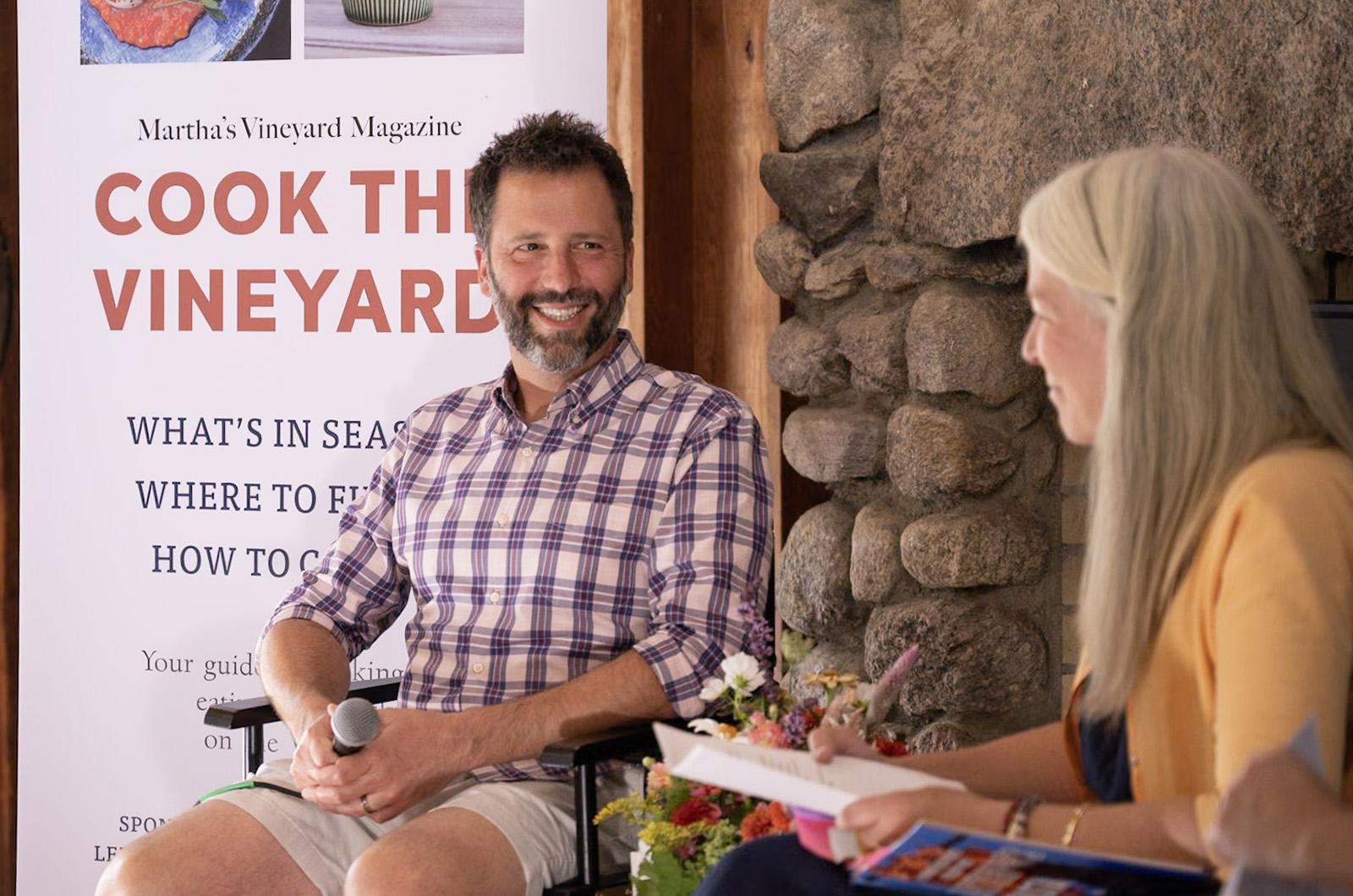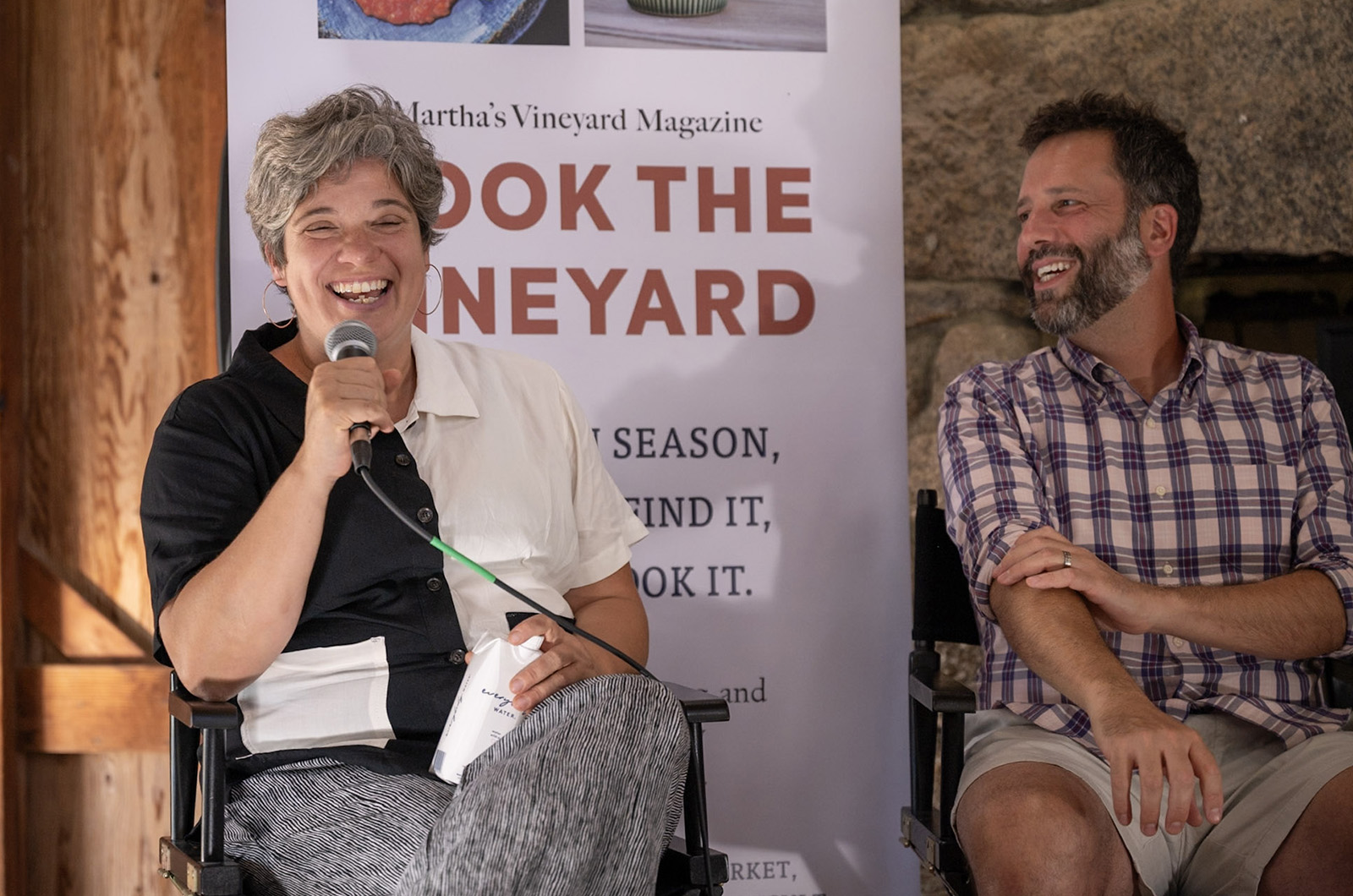Dan Pashman created a new pasta shape because he thought it would be a good story for his podcast The Sporkful.
He told the story of his three-year process of inventing cascatelli at an event Wednesday hosted by Cook the Vineyard, which is part of the Vineyard Gazette Media Group. Susie Middleton, editor of Cook the Vineyard, interviewed Mr. Pashman on stage.
“Every person in the pasta industry who I spoke to, and every person in my family said it was a terrible idea. There’s so many pasta shapes out there that there couldn’t possibly be a new one or a better one,” Mr. Pashman told the crowd at the Sailing Camp park in Oak Bluffs.
Mr. Pashman said he created the new shape based on the three metrics which he uses to judge pasta — how easy it is to keep on the fork, how well sauce adheres to the shape and how satisfying it is to bite into it. Cascatelli, named after the Italian word for waterfall, are short, curved pieces with ruffles along the edges.
“People all over the country were buying it and cooking it and sending pictures of what they were making with it, and 75 per cent of the pictures that I got were cascatelli with tomato sauce, meat sauce or mac and cheese. There were a few party animals that made pesto,” he said. “It just drove home to me, Americans have a very limited range of pasta sauces.”
The James Beard Award-winning podcaster decided his next project would be a cookbook, also with a pasta theme. Anything’s Pastable: 81 Inventive Pasta Recipes for Saucy People was published in March and looks to broaden the horizons of pasta dishes for Americans.
Mr. Pashman had never written a cookbook before, so he enlisted the help of experts, including Vineyard chef Katie Leaird, a recipe developer who has worked at America’s Test Kitchen.
Ms. Leaird joined the conversation. She said the cookbook differed from most of the recipe creation she has done.
“Cooking has gone on for so long before you, so usually the first step in recipe development, even though you’re starting from scratch and you’re creating something totally original, you’re researching first, so you’re looking at what else is out there that is similar,” said Ms. Leaird. “Dan’s project was really interesting because he wanted recipes that nobody had really done before, so development for Dan was really finding out what he was looking for, where he wanted it to be different.”
The resulting cookbook includes over 80 pasta recipes that veer away from the typical bolognese and marinara, instead offering ways to cook dishes like pasta pizza and swordfish salsa verde pasta. Each recipe was tested by at least three people and edited to be easy to understand, drawing on Ms. Leaird’s expertise.
Ms. Leaird said that during testing they had people from all over the country cook the dishes to stress the availability of ingredients and how ingredients can differ from region to region.
“I do remember an interesting text message . . . . I started getting all these ‘fava 911’ texts. Dan’s on the west coast, and the fava beans are brown and they’re supposed to be yellow,” said Ms. Leaird. “If you want to appeal to a national audience, then it’s really good to have people test it who are somewhere else in the country, and sure enough, they couldn’t find [the right type of] fava beans.”
Although a specific type of fava bean might be hard to find in certain regions of the country, Mr. Pashman said that overall, the American palette is growing, which makes his cookbook part of the ongoing evolution of American cuisine.
“I didn’t want it to just be Italian because I think that these ingredients are becoming more and more common all across America. They are already in my pantry, and they are in many people’s pantries,” he said. “My pantry is much more varied than the pantry I had grown up with because we’re all exposed to more new things. I wanted to reflect that.”







Comments
Comment policy »